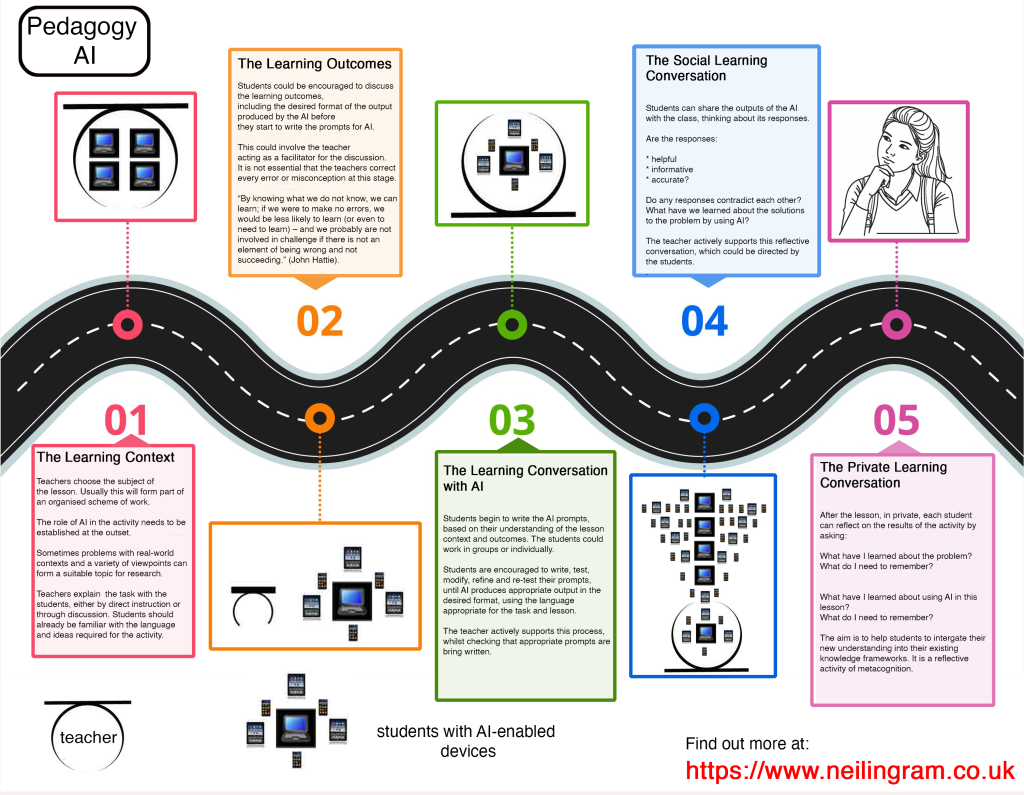
Pedagogy AI is a roadmap for a lesson in which students use AI for themselves. It is based on observations of lessons where students used iPads to research and solve problems.
This is a versatile pedagogy. There are times when the teacher teaches by direct instruction, with visible, evident, controls (eg stage 01). At other times, the teacher gives the students some level of autonomy (eg Stage 03), and yes more invisible controls. Even so, the teacher is always on the sidelines, ready to facilitate and encourage.
In this pedagogy, students are taught to use AI safely and productively. There are clear lesson aims, specific learning outcomes, which the students discuss together with the appropriate format for the output from AI. During the prompt-writing stage (03) the students work with the evident support of the teachers. They are encouraged to experiment and make mistakes, which are points for reflection and further refinement.
The outputs from AI are shared and evaluated critically (04). The best answers can be combined to contribute to the discussion of the problem. Sometimes the problems have a real world context and a variety of different viewpoints, such as “should we vaccinate young children against diseases like measles”, or “how can we live more sustainably?”. A balanced account of all of the issues and views could be appropriate learning outcomes for such tasks.
As students become used to this way of working, they will gain increasing confidence and autonomy (04). Even so, behind this independence, the teacher remains a supporting critical presence.
Finally (and most importantly), students reflect privately on their learning from the lesson (05), reflecting not only about the problem under study, but also their experiences of using AI.
A word on the symbols:
 |
This represents a teacher-centred pedagogy, such as direct instruction. The teacher is using explicit and visible controls over the content that is being taught and the way that the lesson proceeds. |
 |
The teacher is giving some control and autonomy to the class to direct the course of the lesson. The teacher is using more invisible controls, but is still present as a facilitator at the side of the lesson. |
 |
In this stage, the students are working independently, but under the supervision of the teacher. This allows the students some autonomy, whilst ensuring that the students work safely and productively. |
 |
This represents students working with increased confidence and autonomy, whilst still under the support and guidance of the teacher. This is an example of a versatile pedagogy. The teacher can intervene with visible controls, when necessary. |
Read about the ideas behind this road map in a series of blog posts on this site, Teaching and learning with AI (parts 1-10).
Go to the first article here.
